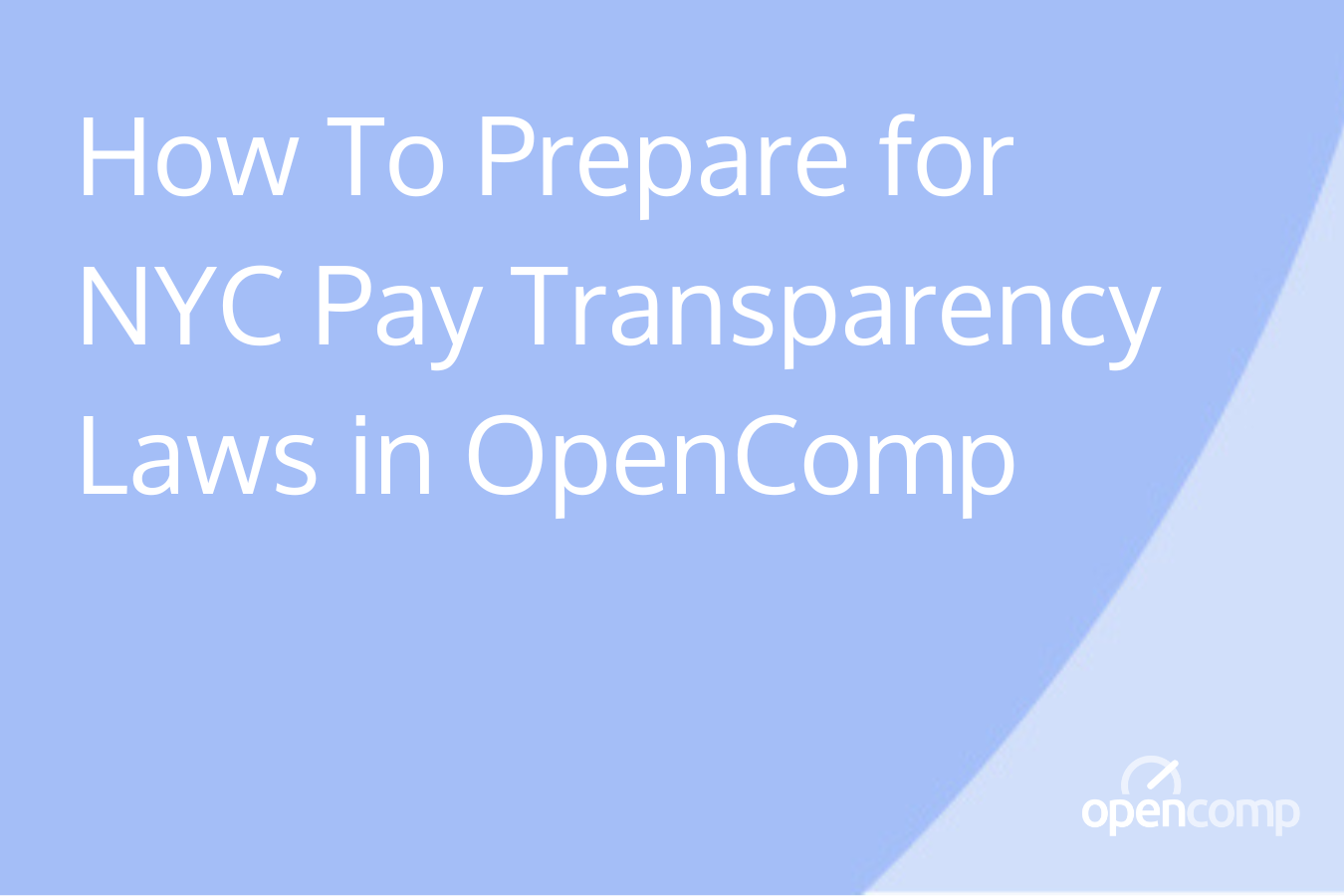The HR Leader's Definitive Guide to Preparing for Pay Transparency
A step-by-step guide for preparing for all active or pending legislation, co-authored with Charter
A step-by-step guide for preparing for all active or pending legislation
The movement for pay transparency is growing stronger. On November 1, New York City became the most populous jurisdiction in the US to require salary information in all job postings, joining Colorado; Jersey City, New Jersey; and Ithaca, New York. (Several other states and localities have less comprehensive salary-transparency requirements on the books.) At the beginning of 2023, when similar laws go into effect in Washington and California, a fifth of all workers nationwide will be covered under pay-transparency legislation.
Meanwhile, research suggests that a growing number of employers are sharing salary information in job listings even when not required by law, meeting a strong worker appetite for such information: One survey earlier this year found that the majority of workers want some form of insight into how compensation works at their organization, and more than two-thirds would switch employers for greater transparency even if the pay was the same.
What does this mean for your organization?
Whether you’re adopting pay transparency to comply with a new law or simply looking to adopt it within your workplace, one thing remains true: Any employer looking to implement pay-transparency policies needs a plan for how they talk about compensation with their employees.
In a moment when progress on the gender pay gap has stalled, organizations including the OECD and the National Women’s Law Center point to pay transparency as a way to close the wage gap for women and workers of color by making it easier to identify and address pay discrepancies. If not implemented with care, though, pay-transparency policies can have unintended consequences for employee sentiment, engagement, and performance. Employers that release salary information without context risk alienating employees and leaving them with more questions than they started with. And without structures in place to address pay inequities, salary transparency will only reveal pay gaps, not solve them.
This playbook is designed to guide people leaders through answering four critical questions involved in preparing for pay transparency legislation. Each section starts with a guiding question and includes tactical advice, best practices, and tools like templates, scripts, and reflection activities.
By working through these questions, you’ll be able to develop a comprehensive strategy that goes beyond compliance, preparing leaders to discuss compensation openly while empowering workers to understand and advocate for their own pay—in short, to craft a strategy that’s equitable, transparent, and fair.
Chapter 1
Chapter 2
Chapter 3
Chapter 4
Chapter 5
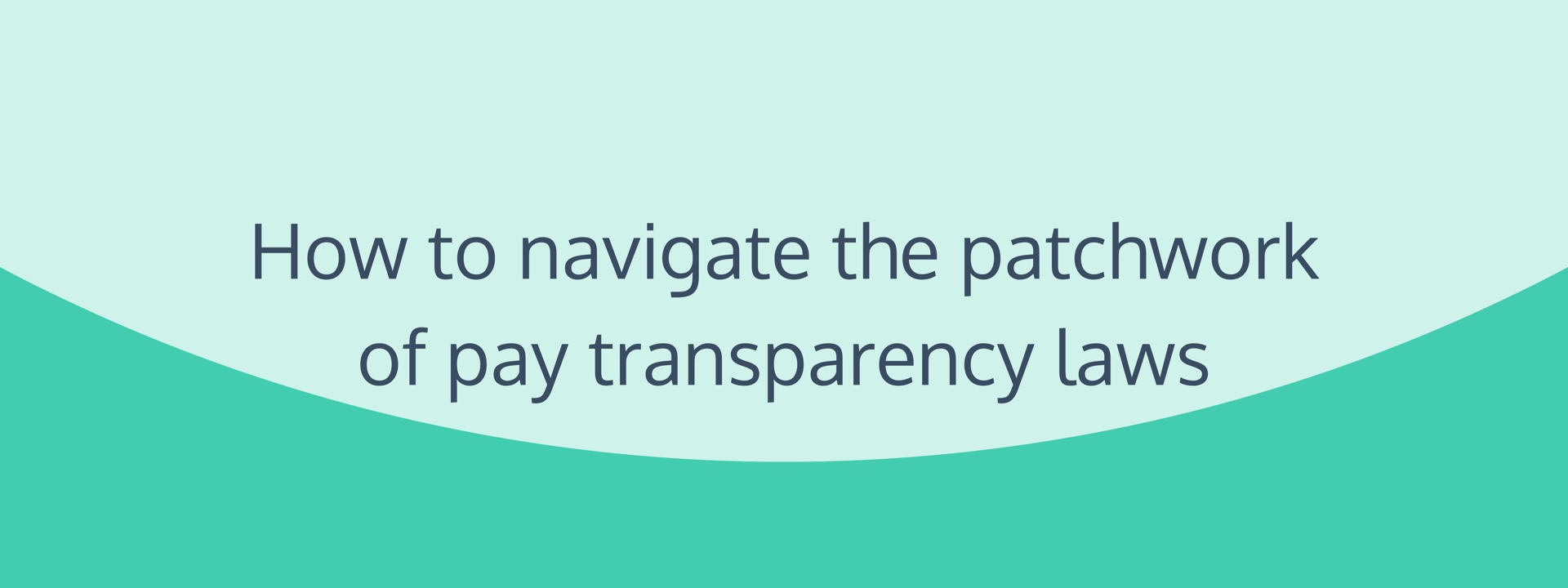
How to navigate the patchwork of pay transparency laws
New York’s City Council wasn’t the only lawmaking body to take up questions of pay transparency this year. In Congress, legislators introduced bills that failed to make it out of committee in either the House or the Senate. “After the federal law lost steam, you saw states and localities coming in to pick up the pieces. As a result, we have a very patchwork system,” explains Melissa Camire, a partner at law firm Fisher Phillips who works on the firm’s pay-equity team.
For employers who operate in multiple states—including those employing remote workers who could reasonably do their job in multiple jurisdictions—navigating this patchwork involves parsing differing requirements between states and localities. California and Washington, for example, cover only employers with 15 or more employees, while New York City’s law includes smaller employers as well. Some of the statutes require only salary ranges, while others require postings to include total compensation information, including benefits. Some require preemptive disclosures only for external applicants, while others cover internal promotions and transfers as well.
Instead of creating different postings to satisfy individual laws, develop job postings that comply with all of the laws. Ben Ebbink, a California-based partner with Fisher Phillips’s pay-equity team, recommends crafting job postings to comply with the most stringent ones. “The approach is to write to the most restrictive requirement and make that your standard,“ he explains. That way, all postings “will be compliant with other jurisdictions that don’t necessarily require that much.”
Curious what the laws are in different states?

What is your business’ compensation health?
Make sure your compensation strategy is setting you up to pay your employees fairly and equitably with five data-driven steps.
Step 1: Conduct salary benchmarking
Benchmarking is the process of comparing your roles to external salary data, often compiled by consulting or research firms, to learn what your peers are paying and where your company stands. For accurate benchmarks, reliable data is key. (Benchmarking works best if you have a leveling framework in place. To learn how to create one, see the guide at the end of this section.)
How to identify good compensation data
Make sure your salary data set checks all of the following boxes:
- Is less than six months old. As 2022 proved, the market can change quickly. Old data can make you uncompetitive and puts you at risk of overpaying or underpaying.
- Provided by employers, not employees. Employee-provided data—the kind typically found on free salary websites—is often inaccurate or inflated.
- Verified by a third party. An added layer of verification ensures you’re working with clean and correct data.
- Relevant to your company’s size, stage, and industry. Compare yourself to your peers. If you’re a growth-stage company, don’t use data that forces you to compare yourself to Google.
- Compares jobs by responsibility, not by title. Even among similar job titles, responsibilities and competencies can vary depending on a company’s size and maturity.
Common mistakes and misconceptions
Are you inadvertently perpetuating pay inequities? Avoid:
- Asking your board and/or peers for advice.
- Basing compensation on an employee’s previous salary (not least because many states have laws on the books barring employers from asking for this information) or asking candidates for salary expectations.
- Googling numbers.
- Throwing out your highest number to compete with large public companies (unless you are one).
Step 2: Develop a compensation philosophy
A compensation philosophy is a concrete statement about how your company will pay and reward its employees. Here’s an example of a compensation philosophy statement:
“We pay all employees in the 50th percentile of the market relative to San Francisco, regardless of their location.”
Four areas that define your compensation philosophy
- Market position: Decide how you’ll target the market and at what percentiles you'll pay for different roles, to balance attracting top talent and managing your finances.
- Pay mix: How will you pay in terms of cash, equity, and variable incentives like bonuses and commissions? Will you give employees an annual raise based on cost of living adjustments or will you increase pay based on performance (or both)?
- Segmentation: Will you have a single pay strategy for your entire company, or will it vary by group (such as department or role)?
- Geographic strategy: Decide how you’ll pay employees in different locations. Also have a plan for how you’ll pay employees who move to another region, state, or country.
Four compensation philosophy best practices
- Be clear and consistent. Your compensation philosophy should help you answer a variety of questions throughout an employee’s life cycle. For instance, if any employee wants to move to another region or state, how will it affect their pay?
- Lead with data, not feelings. Compensation can be emotional because it’s tied to the health and quality of life of your employees and their families. Take a step back when you find yourself making decisions based on emotions. Gather data to ground them.
- Beware of exceptions. Anything related to compensation should apply to 80-90% of your organization.
- Reevaluate when necessary. When there’s a major change or milestone in your organization, review your compensation philosophy to see if it’s still relevant.
Step 3: Review or create salary bands
Sharing bands in job posts ensures that employers and employees alike have the same information, leveling power imbalances and eliminating pay secrecy.
Aggregate and define cross-functional minimum, midpoint, and maximums for your pay ranges, ensuring pay consistency and fairness for similarly paid roles and levels within your organization. These numbers will be the foundation of all headcount planning, position your organization to eliminate wage inequity and discrimination, and set you up to list salary information in job postings.
Salary bands aren’t a sliding scale
Lots of organizations that claim to have bands have simply selected the amount that they want to pay for a job and built a range around it. Unless salary bands function as containers that aggregate like-for-like jobs, they are inaccurate, perpetuating the very pay inconsistency they’re designed to solve.
Five steps to create salary bands the right way
- Complete market analysis and benchmarking.
- Set your pay targets and market positioning.
- Understand the costs and impact of your strategy.
- Create a compensation philosophy.
- Build salary bands for every role’s job level. (This requires a leveling framework. See sidebar at the end of this section.)
When to reevaluate your salary bands
Like most things compensation-related, pay ranges must be reviewed periodically to make sure they’re still relevant. In general:
- Check data for your hot jobs every six months.
- Redo your ranges every year.
- Age your pay ranges every other year by increasing the midpoint of all ranges by the same percentage.
- Review your roles and update as needed based on internal trends. An increase in offers at the top of a range, for example, may be an indication that you need to age your ranges sooner than planned.
- Revisit ranges during big company milestones like raising new rounds.
Step 4: Define your processes for promotions, merit increases, and bonuses
How will you promote and reward employees in a fair, consistent and equitable way?
Best practice #1: Create consistent guidelines and criteria.
When it comes to performance ratings and salary increases, clearly define the following:
- What determines eligibility for a salary increase?
- For merit increases or bonuses, what performance ratings are eligible?
- How will you determine the increase or bonus amount?
Best practice #2: Set a schedule for key processes that affect salary increases and bonuses.
Plan to conduct pay audits quarterly, to adjust salary bands once a year, and to offer merit increases—typically tied to performance-review cycles—up to twice a year.
Step 5: How to create a job-leveling framework
Before you can create salary bands, you’ll need a job-leveling framework, otherwise known as career ladders. Job levels define the seniority, expectations, and responsibilities for a specific role. For example, engineer, senior engineer, and lead engineer are jobs within the same function that exist at different levels, each with its own criteria, responsibilities, and salary band.
Together, job levels and pay ranges show employees how their career and salaries can progress at a company, while making sure that that progression happens in an equitable way. A promotion from senior engineer to lead engineer, for example, would involve the same step up in level and salary band for all employees, ensuring that the title bump isn’t unfairly more lucrative for some than others.
Four steps to creating a job-leveling framework that’s tailored to your organization
Step 1: Meet with top execs and stakeholders.
To begin defining the competencies that separate levels within the framework, ask specific questions like, “What do top performers do that you wish applied to everyone in the organization? ”
It’s important here to note the difference between a competency and a quality. A competency, such as communication, can be measured objectively, while a quality, such as fairness, is subjective.
Step 2: Recommend competencies.
Propose competencies for every job level based on your conversations, taking into account business needs, strategy, and culture. You can have competencies that apply companywide, and others that are specific to certain roles or functions.
Step 3: Write descriptions for every job level.
Include how you’ll measure proficiency for each competency. Aim for a clear distinction and scale of complexity between levels, without getting so specific as to have a rigid checklist. No two levels should have the exact description.
Step 4: Apply pay ranges to each level.
If you’re already completed benchmarking and decided what you can afford to pay relative to the market, assign a pay range for each job level.
How to prevent pay inequity if you don’t have job levels
As the steps above show, developing a job-leveling framework can take some time. If you don’t have the resources to do so right now, or if you feel your company is too small to benefit, there are other ways you can prevent pay inequities related to career progression.
- Start having performance conversations outside of formal reviews. Talk to employees regularly about the expectations for their roles, what’s next for them, and what they need to do to get there. When it’s time for a performance review, you can continue the conversation and talk about the progression you’re seeing.
- Think about equal work for equal pay. Look at the compensation for people doing exactly the same job for the same team. Is there a pay gap? If so, try to learn if there’s a specific reason for it. For example, does one person have an advanced degree, while the other does not? If you can’t find a fair answer, make a salary adjustment as soon as you can.

How do you communicate about compensation with employees?
Now that you’ve defined your compensation philosophy, it’s time to share it.
That means going beyond simply announcing how compensation works. Focus on building trust in your policies by helping employees understand them, advises Ashley Brounstein, OpenComp’s senior director of people. “It all starts with education,” she says. “If you don't understand how decisions are made, then you can't trust the process and you can't trust how your own compensation is delivered.”
Your internal communications plan should take into account your organization’s compensation philosophy, size and stage, and culture. To shape your strategy, start with a few simple questions: Who, what, when, how, and why?
Who?
Think about the major stakeholders in your organization, from the compensation experts to middle managers to entry-level employees. Each of these groups should have their own opportunities to learn about your compensation philosophy, even if the framing and types of information differ from level to level.
Take particular care to bring managers up to speed so they can answer questions from their reports, advises Brounstein. “You want conversations to be seen as a credible source, and you can't do that with managers if they don't understand,” she says. She suggests preparing managers for these conversations with resources like manager-only forums, FAQ lists and fact sheets, and even role-playing opportunities.
What?
Beyond salary ranges for individual positions, what information is shared with candidates and employees? Do you make available your career levels and their associated salary bands? Do you go further and share individual salaries for employees working at the company? And what about bonuses and raises—should you make those formulas available to employees?
At minimum, Fair Pay author David Buckminster, who formerly led compensation at Nike, Starbucks, and Yum! Brands, recommends companies share leveling criteria to accompany any salary-band information. Otherwise, the information will lack context and create confusion and potentially distrust. “When companies post their pay ranges, they also need to be extremely clear about what their leveling criteria looks like,” he told Charter earlier this year. Information about how compensation relates to job responsibilities, seniority, and promotion is necessary context for applicants and employees alike to understand how their own career fits into the structure.
When?
The short answer is: often. Managers should check in frequently with employees to understand their concerns, questions, and motivations related to compensation, tying those discussions to larger conversations about growth and development. “Compensation needs to be an ongoing conversation that you have, just like performance is an ongoing conversation,” advises Brounstein. “The more that you have conversations on compensation, the easier they become.”
The performance-review cycle is also an opportunity to proactively educate employees about your compensation policy. Use that time to go over cycle timelines, market data on salaries, and methodology for determining both salary ranges and raises.
How?
Use a variety of forums to educate your team on your compensation philosophy, and make the information easy to access at any time. In addition to synchronous education sessions like town-hall meetings and manager 1:1s, put digital resources on a team intranet or your company’s website. For example, Gitlab publishes its compensation principles, review-cycle timeline, and compensation-calculator formula online as part of its publicly available team handbook.
Why?
Above all, conversations about compensation should come back to the “why.” For Caryn Hubbard, vice president of finance of Buffer, that’s the first step in the shift to pay transparency: “You've got to get the buy-in from your people and have real conversations to talk about the discomfort,” she says. “Talk about the benefits, talk about wage gaps.” Even with the most detailed compensation philosophy, compensation decisions won’t fully make sense to employees unless they can connect back to your organization’s values, mission, and goals.
Best practices: How to talk about compensation and inflation
Even among compensation experts, navigating how to support employees amid rising prices has been tricky. As Buckminster put it in an interview with Charter: “We have literally never planned comp in a high-inflation environment.” He recommended employers consider adding a second pay cycle to monitor and address rising costs of living.
Aside from increasing compensation, either through raises or one-time bonuses and stipends, leaders can also address inflation in other ways. In March, Charter co-founder Erin Grau shared some advice for talking about inflation in HR Brew. Here are her tips:
- Acknowledge the current economic reality. Make sure employees know you’re attuned to the fact that costs are rising, and share what you’re doing to offset some of them.
- Have inflation-education programming. Invite an expert such as an economist or financial planner to help employees understand the subject, or compile a list of resources to share. Part of this education should be explaining why tying cost of living adjustments to inflation isn’t necessarily beneficial: Most companies increase salaries by around 3% each year, a rate that’s outpaced over the past decade (last year, it was 1.4%, and 2.3% the year before that).
- Talk about compensation in terms of the full package. Call out any changes you’ve made over the past year to benefits, retirement plans, and equity.
Script: Manager conversations
Don’t just hand managers compensation guidelines and criteria. Help them feel an integral part of the process by providing training that teaches them how to:
- Apply guidelines and criteria fairly and consistently.
- Prevent unintentional bias from influencing their decisions.
- Have conversations with employees about compensation and the decision-making processes behind it.
It’s especially important for managers to touch base with direct reports to address any questions or concerns through 1:1 meetings. These conversations have three goals:
- Help reports understand the organization’s overall compensation philosophy
- Help reports understand their individual compensation
- Tie compensation into a larger discussion about development and growth.
As you navigate these conversations, there may be some employees who feel less comfortable talking openly about their own and others’ compensation. Managers should approach these 1:1s with patience, and can help empower reports to ask questions by proactively bringing up potential questions and concerns. Building this confidence is especially important for workers from historically underrepresented (and underpaid) groups.
Below, you’ll find a list of questions and statements to use as a starting point.
- Have you looked at our compensation philosophy? Do you have any questions about how salary bands and individual compensation are determined?
- If you could wave a magic wand and change something about our compensation philosophy, what would it be, if anything?
- Looking at your individual compensation, your base salary is _________, based on your current level of ____, which has a salary range of __________. To increase your compensation within the band, you will need to ________________. OR To reach the next level with a salary range of ______________, you will need to___________.
- Thinking about your own goals for your growth trajectory, what skills or projects would you like to take on to achieve those goals?

How do you talk about compensation throughout the recruiting process and during onboarding?
Be prepared to create new job posting templates and to update existing postings. Of course, this process can be as straightforward as making simple additions to existing language, but now is a good time to consider a larger overhaul of the way open roles are promoted.
The anatomy of a successful job posting
The job posting is often a candidate’s first impression of a company’s culture. As such, it’s a powerful way to communicate your compensation philosophy and how you value equity and transparency.
Below is a guide to the different parts of a posting. For each section, we’ve included best practices to help you not only comply with new and existing laws, but put your best foot forward with potential applicants.
| Section | Description and purpose |
| Job title | The job title should be clear, succinct, and searchable—for example, “Level 1 Engineer” or “Head of People Operations.” |
| Description of role and responsibilities | Include both the high-level purpose of the role, explaining how it connects to the organization’s mission and vision, and the specific responsibilities that will comprise the day-to-day work. Also state whether the position is a people manager role and which role it reports into. |
| Compensation | To comply with the strictest pay transparency laws, the job posting should include a specific salary range, with minimum and maximum, that reflects actual compensation to your best knowledge. To comply with laws in Colorado and Washington (but not in NYC), it should also include a description of other perks and benefits, including stipends, bonuses, 401(k) programs, and insurance offerings. |
| Compensation philosophy | To help contextualize salary band information, outline the most important factors that determine salary bands, such as experience, responsibilities, and key competencies, and where individuals fall within a band. If an open position could fall in multiple levels, mention that the listed band combines pay ranges for more than one level and explain how applicants will be assessed during the interview process to be placed in the appropriate level. |
| Applicant qualifications | Limit the qualifications to only the most necessary competencies required to succeed in the role. Avoid language that creates unnecessary hurdles for otherwise qualified candidates, such as specifying a minimum number of years of experience or listing skills that can be learned on the job. |
| Equal employment opportunity (EEO) statement | Although not explicitly required by law for all employers, EEO statements have become commonplace to communicate a commitment to diversity of experience, background, and identity. |
| Company intro | Help the candidate understand the organization’s work, culture, and values. What is the most important thing about your organization for candidates to know? |
Candidate compensation FAQs
Hiring managers are often applicants’ most important point of contact in answering questions about culture, responsibilities, and pay. For managers who have never recruited new team members with pay transparency policies in place, it’s important to get up to speed about how compensation works to give candidates clarity as they move through the hiring process.
Here are some of the most common questions about compensation that managers should be able to answer. The answers will depend on each organization’s specific policies, but these can serve as a guide as you prepare to integrate pay transparency into your recruiting process.
Q: How are the bands determined?
Applicants might ask this question in a number of ways, including framing it in terms of adjustments for location, performance, education levels, or previous work experience. Your answer should explain how each of these factors influence compensation.
Q: Can I negotiate past the stated salary range?
Explain the company’s negotiation policy, which should be standard from position to position. If your organization does allow negotiation, also explain the guardrails in place to maintain pay equity among employees within the same salary band.
Q: On Glassdoor, I’ve seen higher salaries for this same title. Can you increase my compensation to reflect that difference?
The best way to answer this question is to give details about how your organization determines pay bands. Bring up your process for benchmarking salaries, including the tools you use for understanding compensation for similar positions and where your organization falls within the typical range.
Q: How often are the bands updated? Are there regular cost of living adjustments?
In addition to answering these questions straightforwardly, it’s worth mentioning any one-time bonuses, stipends, or other benefits that the organization has provided employees to offset rising costs of living.
Q: What is the compensation trajectory for this position?
Lean on the compensation philosophy and how bands are determined to answer this question. Explain the factors that determine salary increases, including the role performance plays, and make it clear whether promotions or pay raises are within the posted band or into the next level.
Q: How does compensation outside of base salary work? How are those disclosed?
In some jurisdictions, descriptions of benefits and other compensation must be included along with salary ranges. Even when that information isn’t required, you should be prepared to describe the organization’s benefits and explain how bonuses are determined.
Q: How can I be sure that other people are not getting a special deal?
People want to know that nothing is being left on the table. Reassure them by reaffirming your policy on negotiation, leveling, and salary bands, and remind them of the opportunities to grow and advance within the organization through regular performance-review and merit cycles. Finally, tie your policy back to the organization’s culture and values.
Best practices: How to talk about compensation and inflation
Even among compensation experts, navigating how to support employees amid rising prices has been tricky. As Buckminster put it in an interview with Charter: “We have literally never planned comp in a high-inflation environment.” He recommended employers consider adding a second pay cycle to monitor and address rising costs of living.
Aside from increasing compensation, either through raises or one-time bonuses and stipends, leaders can also address inflation in other ways. In March, Charter co-founder Erin Grau shared some advice for talking about inflation in HR Brew. Here are her tips:
- Acknowledge the current economic reality. Make sure employees know you’re attuned to the fact that costs are rising, and share what you’re doing to offset some of them.
- Have inflation-education programming. Invite an expert such as an economist or financial planner to help employees understand the subject, or compile a list of resources to share. Part of this education should be explaining why tying cost of living adjustments to inflation isn’t necessarily beneficial: Most companies increase salaries by around 3% each year, a rate that’s outpaced over the past decade (last year, it was 1.4%, and 2.3% the year before that).
- Talk about compensation in terms of the full package. Call out any changes you’ve made over the past year to benefits, retirement plans, and equity.
Best practices: Should my organization allow negotiation?
Maintaining consistent salary bands and leveling becomes more complicated when new hires negotiate pay upwards, stretching pay bands and introducing discrepancies between new and existing employees. Research has demonstrated how negotiation processes may also exacerbate racial and gender pay gaps, with women and people of color less likely to negotiate and hiring managers less likely to give concessions to those candidates even when they do.
Many companies, including Charter, have a no-negotiation policy. In 2015, then-CEO of Reddit Ellen Pao led the push to eliminate negotiation in the hiring process, telling The Wall Street Journal, “Men negotiate harder than women do and sometimes women get penalized when they do negotiate. So as part of our recruiting process we don't negotiate with candidates. We come up with an offer that we think is fair.” (The company has since reinstated negotiations.)
Other companies put guardrails in place to maintain parity among employees of the same level, like adjusting compensation for peers if a new hire negotiates a higher base pay, or only allowing new hires to negotiate their job level, not compensation within a salary band.
Whether or not you decide to allow negotiations, there are a few principles to follow while designing your policy:
- Be consistent. Maintain your negotiation policy across all positions and all candidates in the pipeline—including internal hires and promotions.
- Be clear. Explicitly tell candidates what your policy is, and explain the reasoning behind it. Clarity is especially important for organizations that do allow negotiation, as researchers have found that clearly stating that candidates can negotiate reduces the gender pay gap for women, making them both more likely to apply and more likely to negotiate.
- Update bands regularly. For organizations that do allow negotiation, updating bands at least once a year ensures that salaries within a job level remain comparable to one another. For those that don’t, updating compensation based on market rates and cost of living increases allows employers to maintain competitive pay.

How do you sustain an equitable approach to compensation?
As you read earlier, pay transparency doesn’t always lead to true pay equity. Systemic change only happens when company leaders can champion change from the top down, so create a plan to maintain your compensation philosophy even as your organization changes, grows, and responds to external forces like inflation or a recession.
Bring leaders on board
OpenComp’s 2022 State of Startups Pay Equity report revealed that 78% of CEOs say pay equity is important, and 73% say it influences recruiting and retaining top talent—but several common roadblocks prevent employers from solving pay inequality within their organizations.
For one thing, many CEOs aren’t in tune with the reality that most of their teams lack adequate resources to address pay equity. In fact, CEOs are 15% more likely to be unaware of this fact than HR leaders. Access to compensation data (19%), leadership buy-in (15%), and time (13%) are the other largest barriers to solving pay inequality.
Maintaining a sustainable infrastructure for pay equity means addressing these challenges head-on, maintaining clear communication with the top of your organization along with the rest of your workforce. From the resources in this playbook, you now have the information needed to make the case for the below best practices—some already covered earlier, some new—that your organization can implement today and carry into the future.
Best practice #1: Share salary bands in job postings and interviews.
Sharing pay bands or salary bands in job postings is now law in New York City, as well as Colorado and many municipalities, and new pay transparency laws take effect in California and Washington come January 1. It’s one of the simplest and most effective ways an employer can make progress toward pay equity.
Best practice #2: Document and communicate the criteria for bonuses and promotions with employees.
Documented processes and criteria give your managers and other decision-makers an objective framework for determining employee pay. Employees get a clear picture of how they can progress, allowing better career decisions.
Best practice #3: Don’t ask candidates for salary history.
When you base compensation on someone’s previous salary, you risk continuing unfair or inequitable pay practices (not to mention breaking the law). That leaves workers— especially women and minorities — perpetually underpaid. For women, this wage gap could mean up to $2 million in lost wages over a lifetime.
Instead, craft an offer based on relevant market data and your compensation philosophy.
Best practice #4: Conduct pay audits and equity analyses to spot pay gaps.
In a 2021 study from the Society for Human Resource Management, nearly half of HR managers surveyed said their organizations don’t conduct pay equity reviews because it’s not a priority for senior leadership. The same SHRM study also revealed that only 35% of organizations provide training on how to properly document pay decisions.
Periodically assessing pay equity at your company is important to reveal what’s working and what changes need to be made. It starts with maintaining data on compensation against demographic factors like race, ethnicity, gender, education, and experience. Also draw on managers’ experience during the data review to add context about individual employees’ leveling
Then, map employees against your chosen data set. Compare each employee to reputable market data and your salary bands. Look for differences by gender, race, ethnicity, role, and level. If there are gaps, can you determine the causes? Were they discriminatory or due to lack of planning or strategy?
Finally, If you’ve identified a pay gap, take action right away. Share results of your findings with the organization, and announce the measures you’ll take to remedy the disparity.
Best practice #5: Proactively budget to correct for pay discrepancies.
During merit cycles (also referred to as annual reviews or focal reviews) employees are commonly rewarded with raises, promotions or bonuses — and salary adjustments that correct pay inequities are also made. When preparing for merit cycles, budget for any adjustments to sustain fair and equitable pay practices.
Best practice #6: Have informal internal discussions.
Extend compensation conversations beyond the hiring process and annual reviews. Ongoing discussions about pay are core to a culture of trust. Here are the pillars of meaningful compensation conversations:
- Consistency: Make sure everyone receives the same message and understands how compensation is handled.
- Pay transparency and education: Don’t just share compensation information. Help people understand what it means for them. The conversation shouldn’t be finished until you’re confident that they do.
- Open-door policy: Executives, managers, and employees should feel empowered to talk to each other about compensation at all times.
Best practice #7: Update your compensation strategy with pay-equity analysis data.
- Develop a compensation philosophy that describes your commitment to pay equity and how you plan to achieve it.
- Use reliable compensation data to understand the competitive landscape for company positions.
- Compare employee compensation in similar jobs, including relevant parameters such as job function, level, responsibilities, years of experience, and geographic location.
- Develop a clear policy and define the repeatable practices your company uses to address and correct pay inequities.
While it is becoming increasingly clear that posting salary ranges is good for recruitment — in a Glassdoor survey earlier this year, 63% of U.S. employees said they prefer to work at a company that discloses pay information — it can also cause problems if pay ranges aren’t communicated throughout the organization. If you haven’t made it a practice of routinely talking about compensation with your team members, there is no time like the present to start.
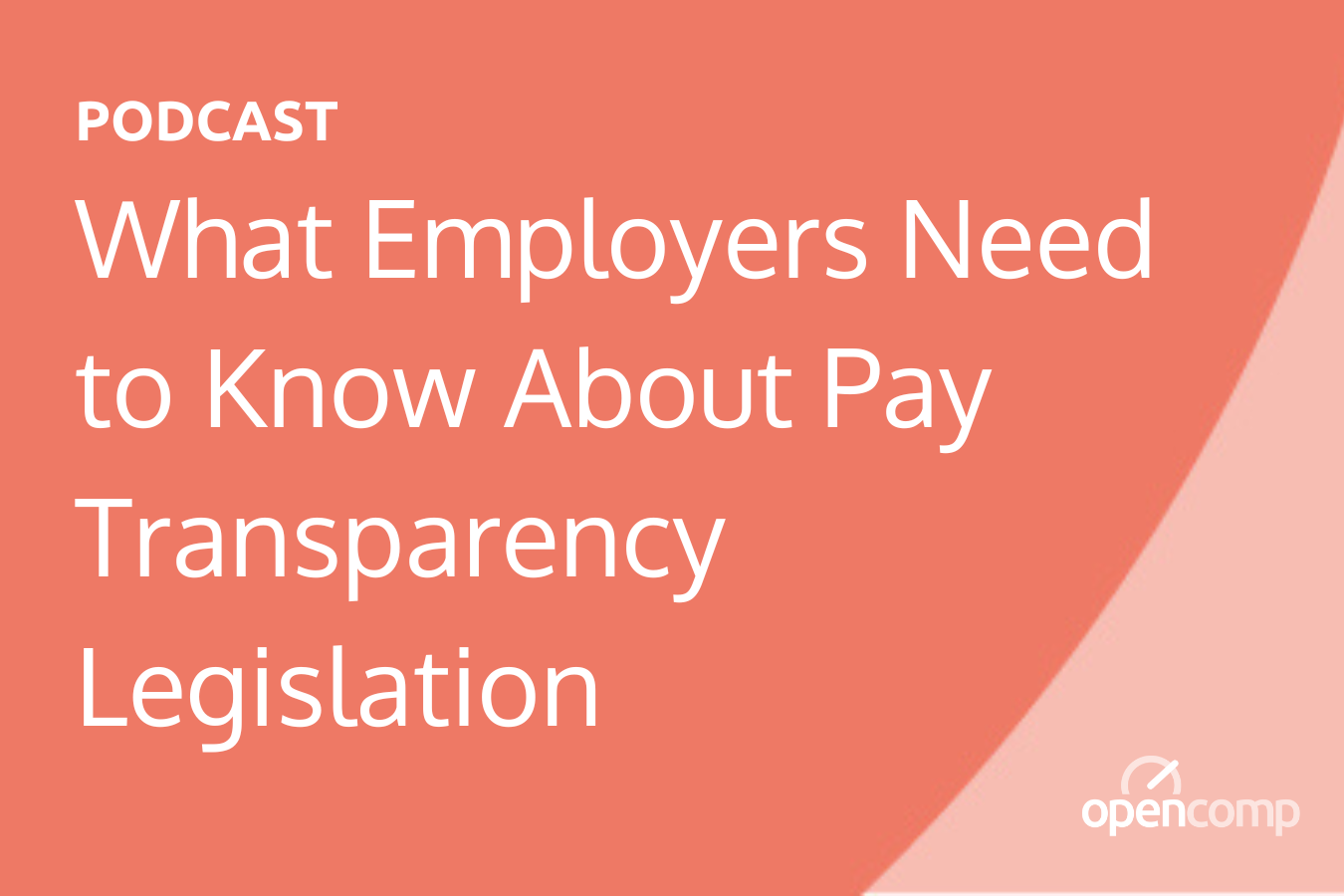
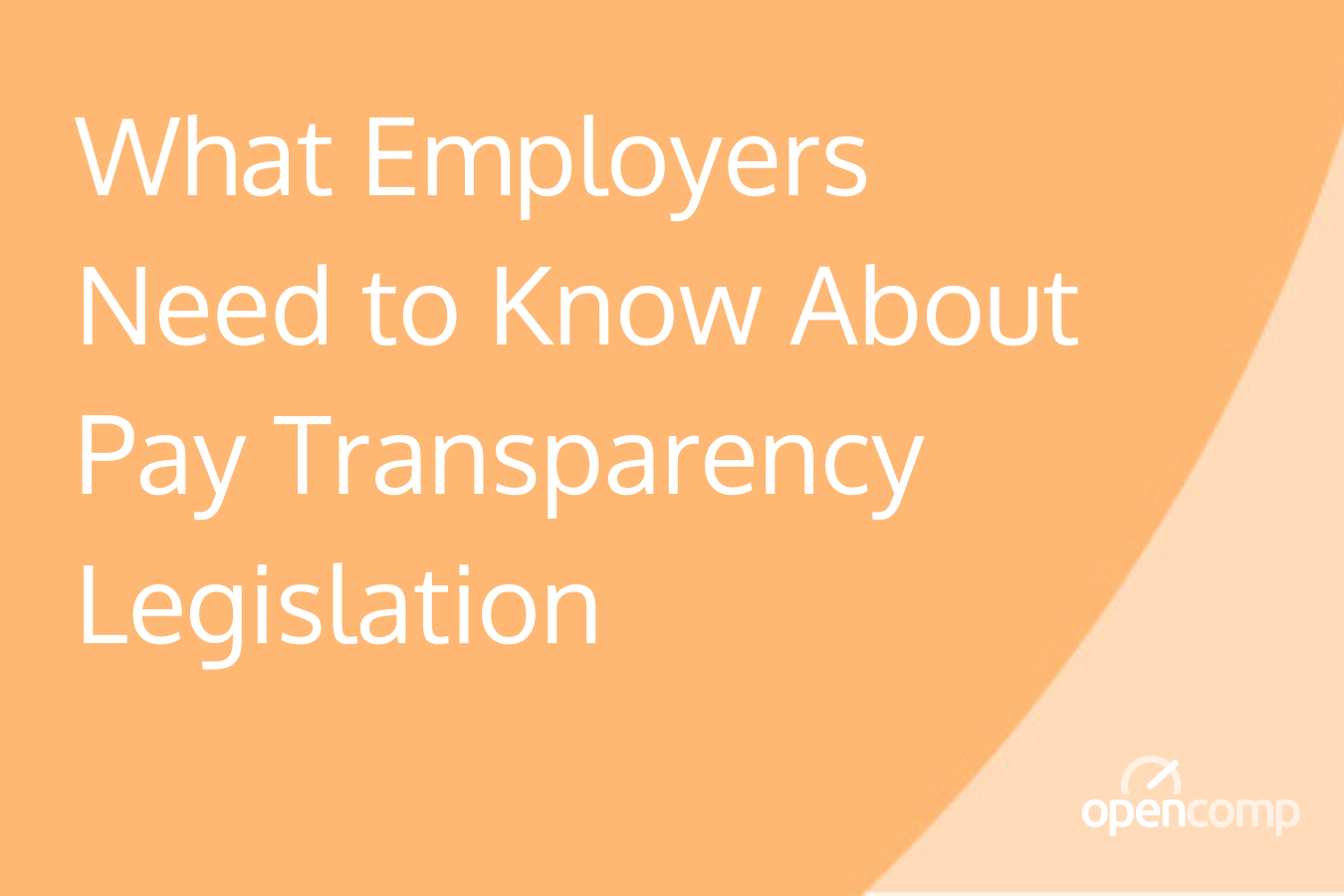



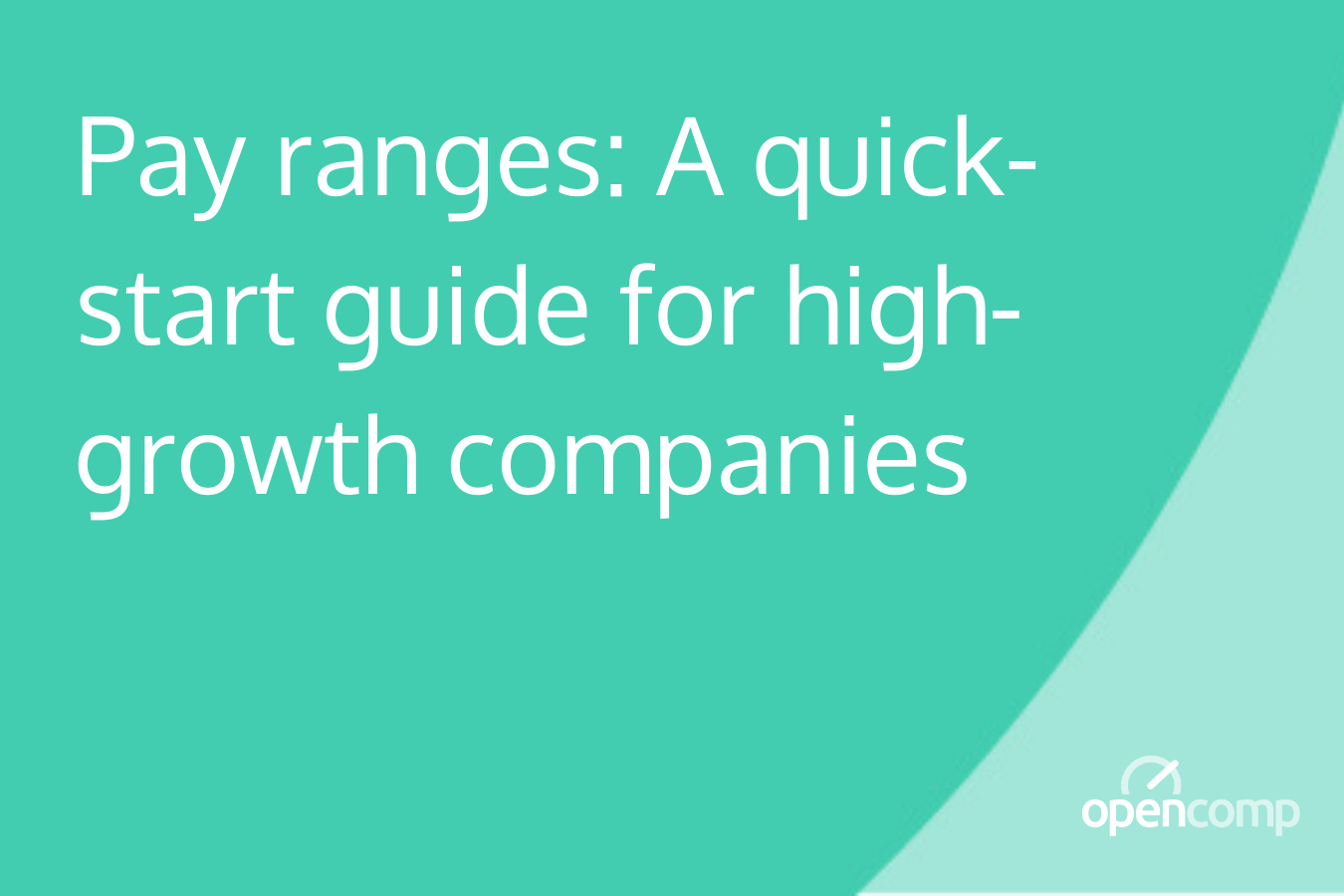
.png)
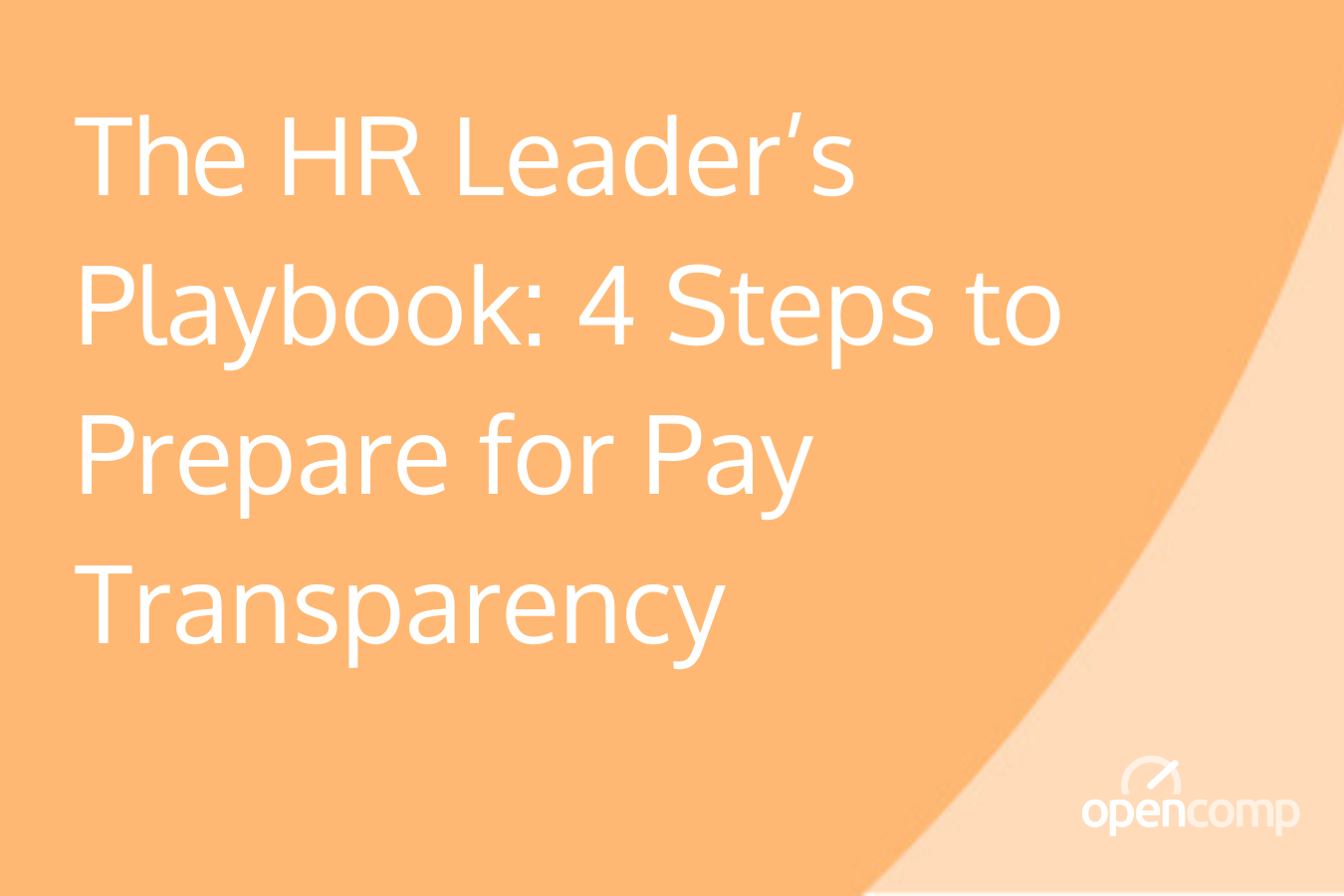
.png?width=1350&height=900&name=Linked%20Resources%20in%20Pillar%20Pages%20(450x300).png)





